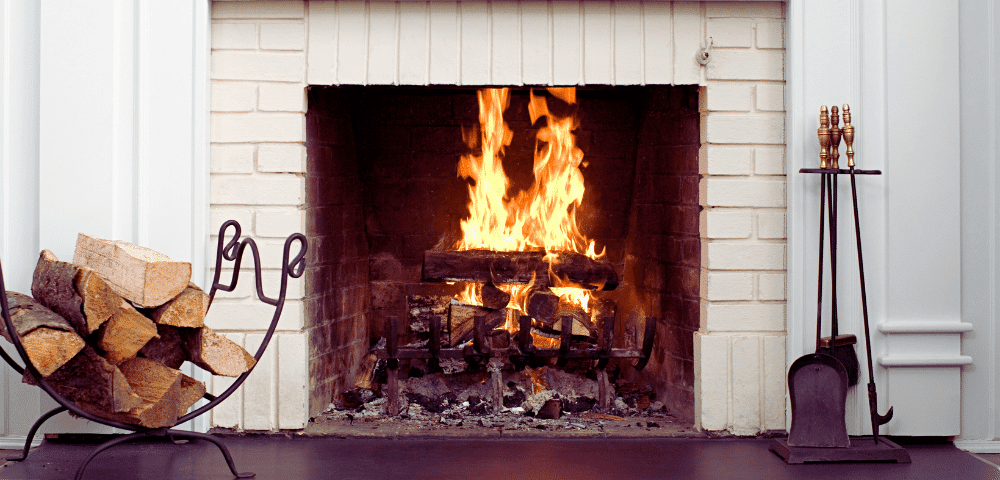There are few things more comfortable than sitting by a fireplace on a cold, chilly day. With the onset of winter, the time has arrived to ensure that your home saves energy and stores heat efficiently. Installing fireplace doors is a great way to add some excitement to your home decor, in addition to keeping the warm air from escaping via the chimney.
But how do you install fireplace doors without a lintel bar? You will have to drill the doors directly into the masonry. The process is relatively straightforward, with the help of a few power tools.
In this article, you’ll find answers to the following:
- How to install fireplace doors without a lintel bar
- Steps
- Things You’ll Need
- Where is the lintel bar in a fireplace?
- Do fireplaces need a lintel?
How to install fireplace doors without a lintel bar?
Lintel bars are horizontal beams placed across the fireplace to shoulder the weight of the chimney structure above.
But without a lintel bar, installing fireplace doors would require you to attach the doors directly to the masonry using masonry screws.
Glass doors with aluminum frames are an ideal choice for fireplace doors. Both the materials are fire-proof and extremely durable. Glass doors also have the additional advantage of presenting a clean and elegant look without hiding the rustic beauty of the fire pit.
Let’s find out the steps and tools you’ll need to install the fireplace doors.
Things You’ll Need
Installing fireplace doors into masonry is not a time-consuming process. It requires little prep work and gets done fast. With the following power tools and bits in your kit, you’ll be all set:
- Hammer Drill
- Multiple Masonry screws
- Masonry drill bits
- Safety goggles and gloves
You can also use a regular drill but a hammer drill will make this job easier for you. Hammer drills have a mechanism in place which powers the drill bit to not only spin and apply pressure (in the case of a regular drill) on the masonry but also strikes at, chip, and sear away the surface, pulverizing the masonry smoothly.
The hammer drill bits are also sturdier with a tip design that adds to its high power functions. Hence, to keep the experience hassle-free and efficient, go for a hammer drill over a regular one.
Steps
- Mark the screw holes:
Carry the fireplace doors and place them as snugly close to the front of the fireplace as possible. Position them so that they line up well with the fireplace opening with no gaps around. Once the doors are in their appropriate positions, mark the chosen spots for attaching the masonry screws with a marker. Remove the doors and set them aside. Time to get down to business!
- Drill the holes:
Get your hammer drill-ready and attach a drill bit slightly smaller in diameter than the masonry screws. Lock the drill bit in place and set it to its hammer setting.
Drill all the holes to a depth of two-three inches, making sure you keep the drilling trajectory steady and straight to avoid any bends along the way. Clean out the resulting dust and debris before moving on to the next step.
- Final steps:
Now, fasten the doors in place and screw them halfway using the masonry screws. Check whether the doors are positioned correctly and freely open and close. Once you’re sure, fasten the screws tight until they are the same level as the door surface.
Check for any gaps between the doors and the fireplace, and if you find any, seal them with fireproof caulk or insulation foam. Voila! Your fireplace doors are in place and ready to use! You will save energy and keep your rooms safer and warmer than before.
The frequent use of fireplaces warrants the need to install fireplace doors. With the fireplace exposed, there’s always some chance of stray embers or sparks flying in and catching on to nearby combustible materials in your home.
Having doors to demarcate the fire from your home would fulfill the dual purpose of safety and upgrading your home decor.
Where is the lintel bar in a fireplace?
Lintel bars are generally located across the top of the opening of the fireplace. They run along the length of the opening and extend about 4-6 inches on each side. They are added as a structural support beam to distribute the overhead weight of the chimney.
You may find arched brick lintel bars but they all serve the same purpose. You’ll also find some bars to be situated towards the back of the fireplace in certain constructions. No matter the placement, they lend crucial structural integrity to fireplaces.
Do fireplaces need a lintel?
The need for a lintel depends upon the size of the fireplace and the weight subjected on its opening. In most cases though, fireplaces need a lintel. Lintels could be made up of wood, brick, concrete, or steel, to name a few. Steel and concrete lintels have the longest lifespan.
Without a lintel, there are significant changes in the structure around the fireplace collapsing due to wear and tear and exposure to high temperatures over the years. They protect the surrounding elements of the fireplace from the effects of the fire.
They also help contain the heat in the fireplace and direct the flue gases towards the chimney outlet. It’s safe to say that lintels contribute a huge part in keeping your fireplace structure intact and functional for a long.
Takeaway
Installing fireplace doors when there’s no lintel bar is a relatively easy project. You only have to invest in a few tools to finish the job successfully. If you feel like the task is not worth the investment and time, you could seek professional help for the same.
In the end, it’ll be a worthy effort. The doors will keep your pets and children safe from the fire, and also help reduce the incidence of hazardous events. Go ahead and give your fireplace that much-needed makeover!


